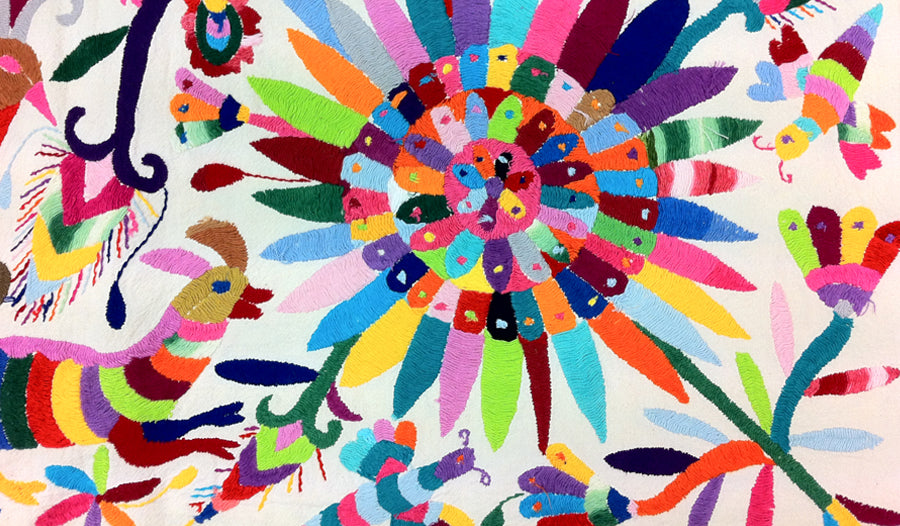
Tenango Embroidery from Mexico
Read on for an excerpt of the article Fantastic Beasts and Where to Find Them: Tenango Embroidery from Mexico from Issue 102 Mend, which features Enndy Lopéz-Lopéz — she'll be speaking on embroidery as part of our 'Eye of the Needle' talk, one of twelve talks taking place this Saturday as part of the Selvedge World Fair. There's still time to purchase tickets, find out more here.
 Image: Tenango embroidery
Image: Tenango embroidery
Mexico is well-known for its rich cultural diversity, reflected in the use of a wide variety of materials, colours, and techniques in its textile art. In fact, there are astonishing levels of creativity and variety among the different textile makers, most particularly among the sixty-eight Indigenous nations. In recent years, Tenango embroidery (sometimes incorrectly referred to as ‘Mexican embroidery’) made in the communities of Tenango de Doria, Mexico has enjoyed increasing popularity worldwide. This embroidery has been made since the 1970s by Hñähñu communities (also known as Otomí) in the mountains of the state of Hidalgo.
The iconography present in Tenango is a local interpretation of the region’s flora, fauna and aspects of everyday life. The embroidery is distinguishable by its characteristic shapes, which are drawn by hand. Multicolour and monochromatic threads give a very vivid finish. Although the Tenangos are a recent emergence, they do come from a long-standing tradition in the community. The drawings are said to be inspired by cave paintings found close to the locality of San Nicolás de Los Ranchos, Tenango de Doria. These paintings were found by the community in the early twentieth century and have inspired the Tenango embroidery that is being crafted today. Another regional craft that has influenced the designs is the tradition of making amate paper (a type of bark paper that has been manufactured in Mexico since the precontact times) in the nearby community of San Pablito Pahuatlán in the State of Puebla. The iconography and techniques used by both Otomí communities are similar and an increasingly significant part of the wider textile network in Mexico.
 Image: Tenango embroidery, cotton, made by the Otomi people, Tenango, Hidalgo, Mexico, 2008/2009
Image: Tenango embroidery, cotton, made by the Otomi people, Tenango, Hidalgo, Mexico, 2008/2009
In the region of Tenango de Doria, there are many communities that embroider Tenangos. For example, the small town of El Nanthe, where different embroiderers came together in 2009 to create a cooperative called Dotnit. This organisation established a collective to deal with potential buyers, retailers and designers and to engage effectively with governmental institutions. The López family has been actively involved with the group, and Teodora López-López is one of the principal founders and leaders of the community. Through the years, she has been a crucial figure in the community, along with her three daughters, who are now involved in the family business. The creation of this cooperative has enabled the community to connect with clients and designers, which has in turn allowed them to explore new markets and establish direct communication with them rather than working through intermediaries.

Image: Detail of main image reverse.
The López-López family has been involved in the making of Tenangos for many years and are experts and proud practitioners of this art. Teodora’s children–three girls and four boys– were taught how to embroider at a very young age by their mother. Embroidery is an important skill in the community. It is done in every possible space: while cooking, on public transport, at social gatherings, when looking after their children or outside the doctor’s consulting room. The portability of embroidery allows women to mix it with their many other occupations such as farming, housework, childcare and community responsibilities. These communities depend on three primary sources of income: remittances from their relatives in the United States, self-subsistence agriculture, and Tenango embroidery….
This excerpt, from Fantastic Beasts and Where to Find Them: Tenango Embroidery from Mexico, was written by Brenda Mondragón Toledo and features in our latest issue of Selvedge, Issue 102 Mend.
